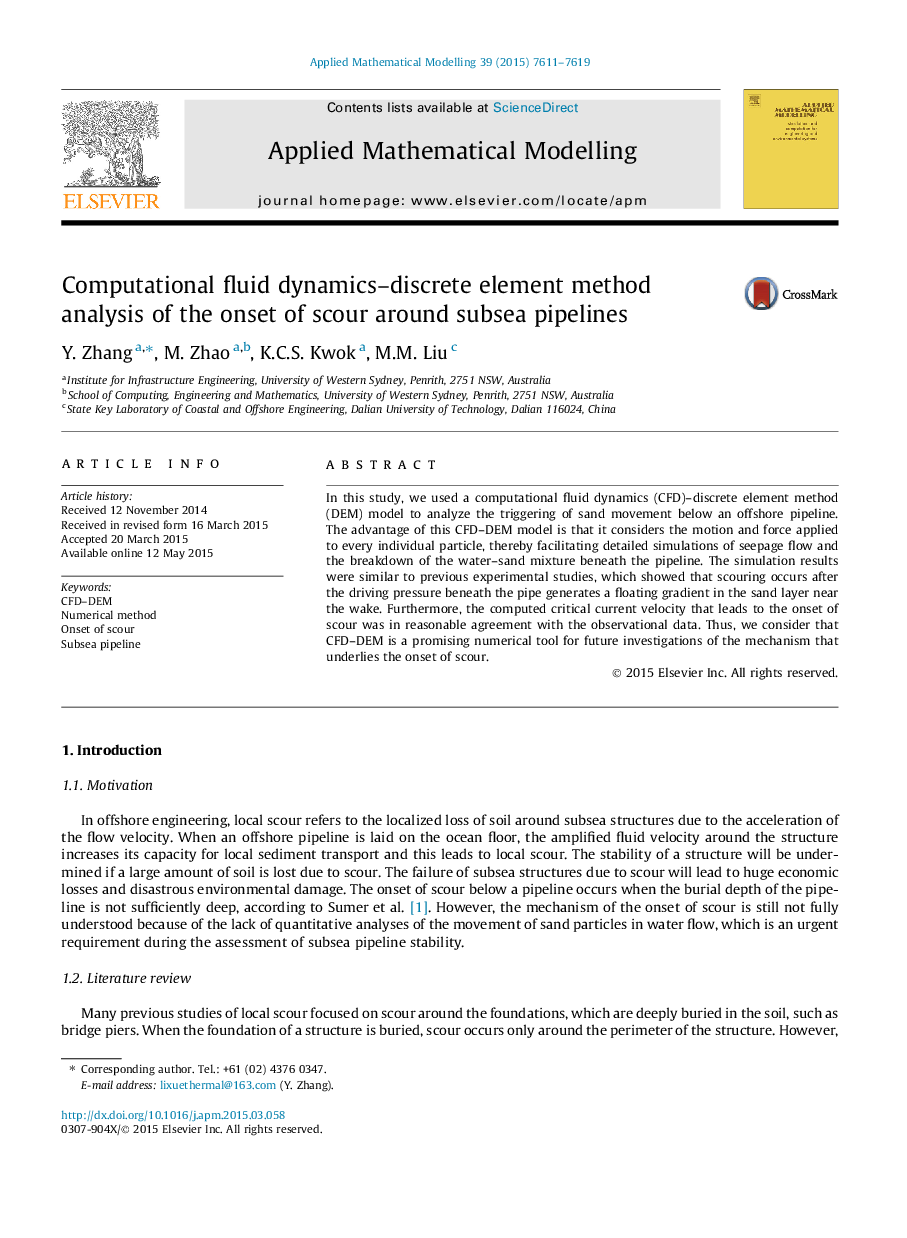| Article ID | Journal | Published Year | Pages | File Type |
|---|---|---|---|---|
| 1703025 | Applied Mathematical Modelling | 2015 | 9 Pages |
In this study, we used a computational fluid dynamics (CFD)–discrete element method (DEM) model to analyze the triggering of sand movement below an offshore pipeline. The advantage of this CFD–DEM model is that it considers the motion and force applied to every individual particle, thereby facilitating detailed simulations of seepage flow and the breakdown of the water–sand mixture beneath the pipeline. The simulation results were similar to previous experimental studies, which showed that scouring occurs after the driving pressure beneath the pipe generates a floating gradient in the sand layer near the wake. Furthermore, the computed critical current velocity that leads to the onset of scour was in reasonable agreement with the observational data. Thus, we consider that CFD–DEM is a promising numerical tool for future investigations of the mechanism that underlies the onset of scour.
